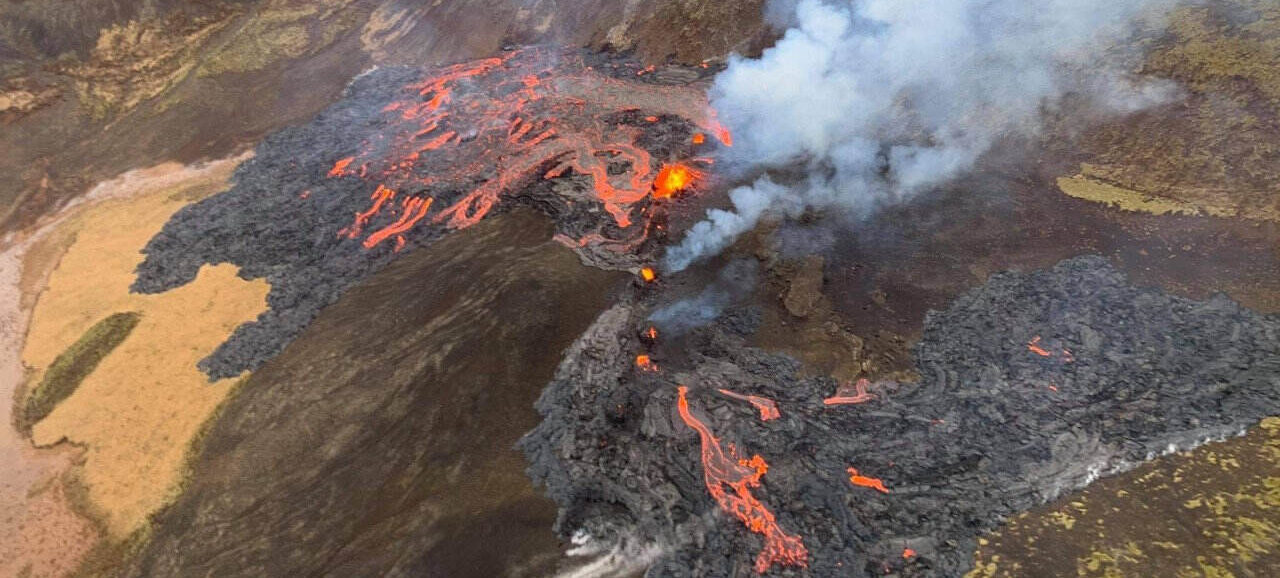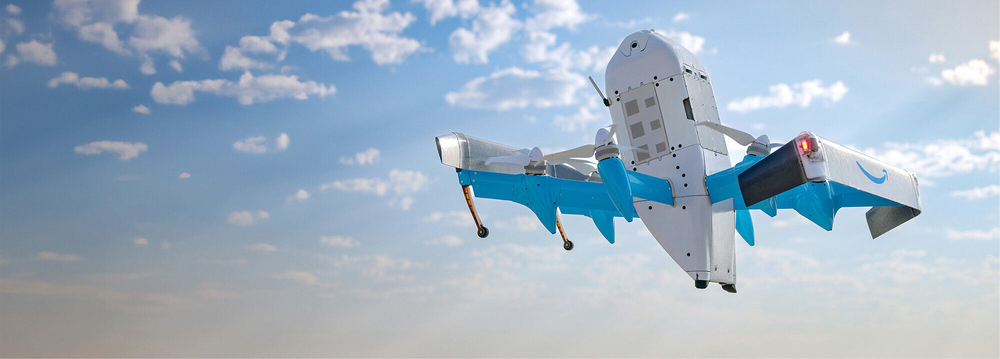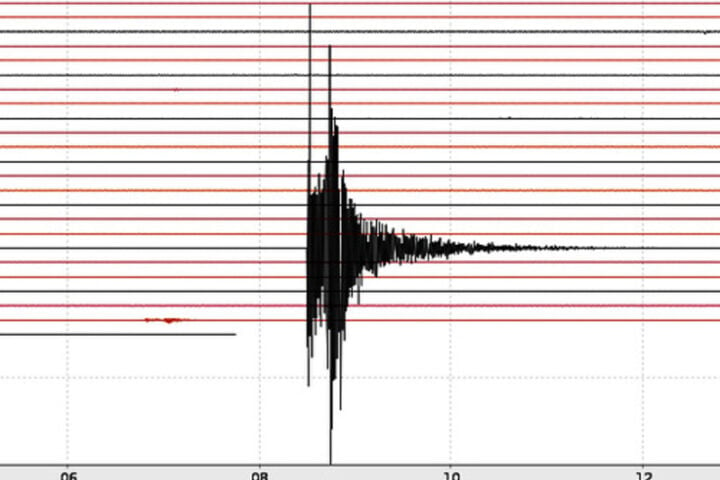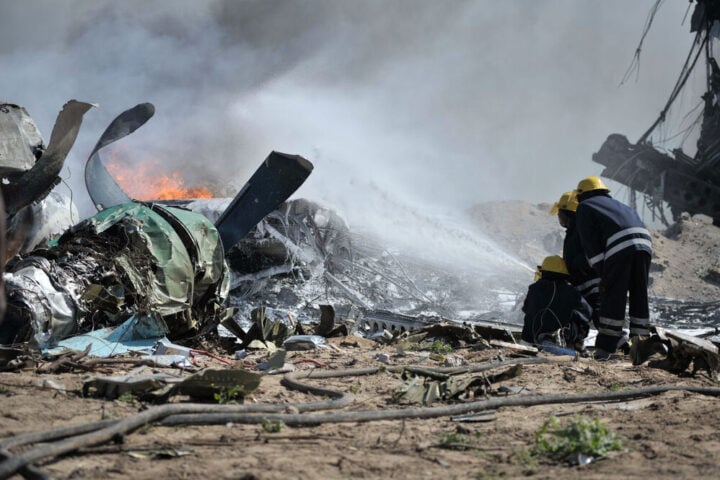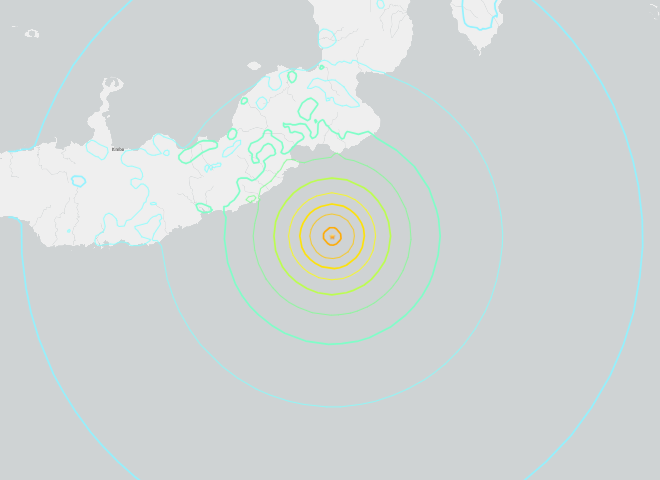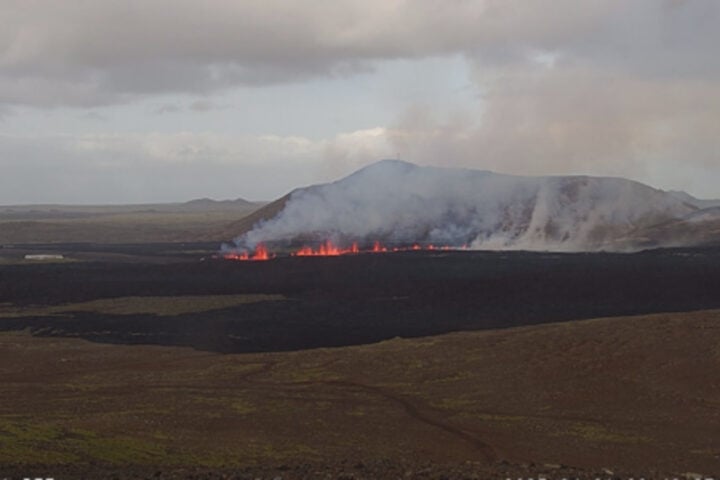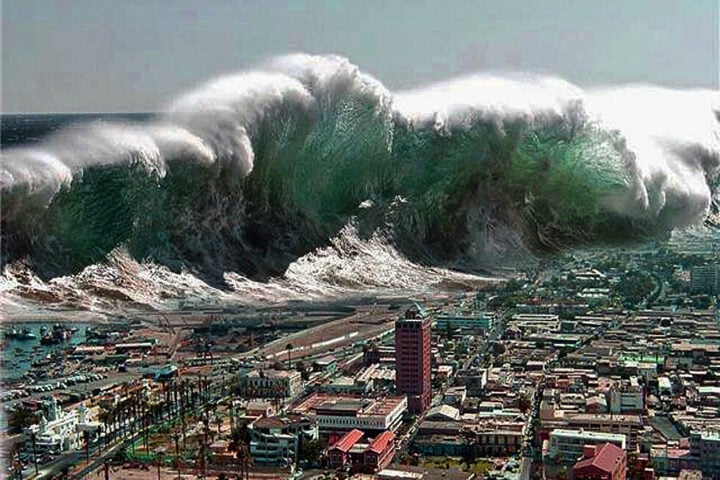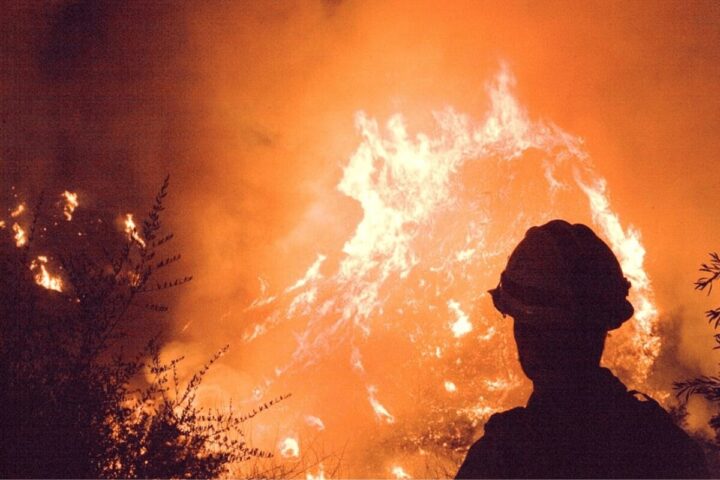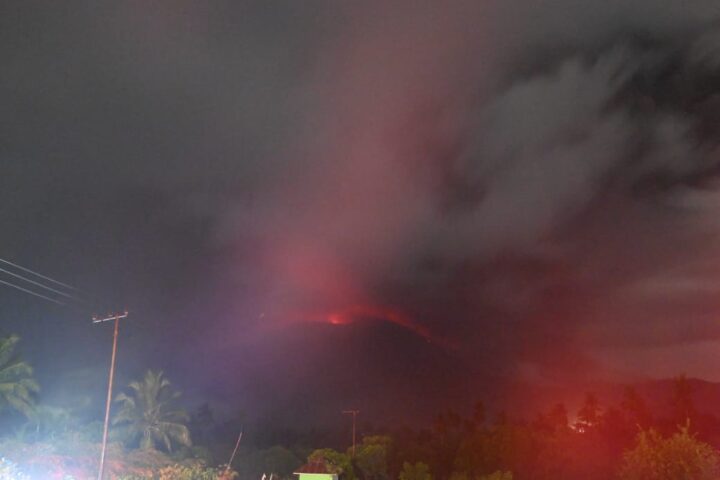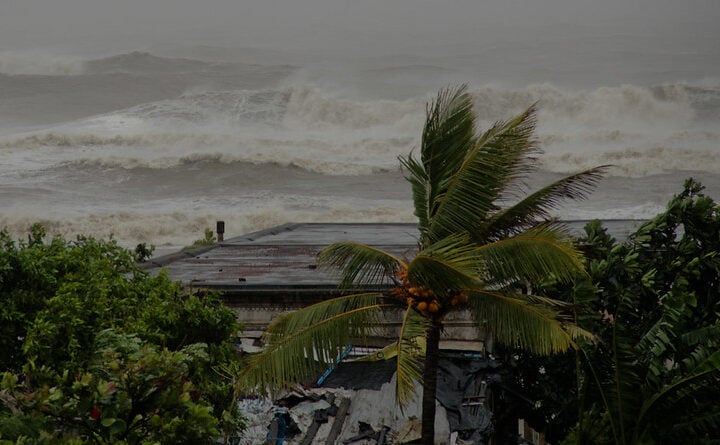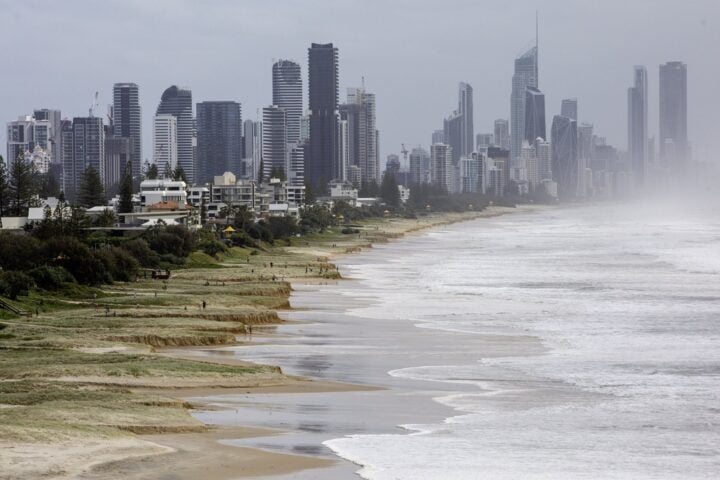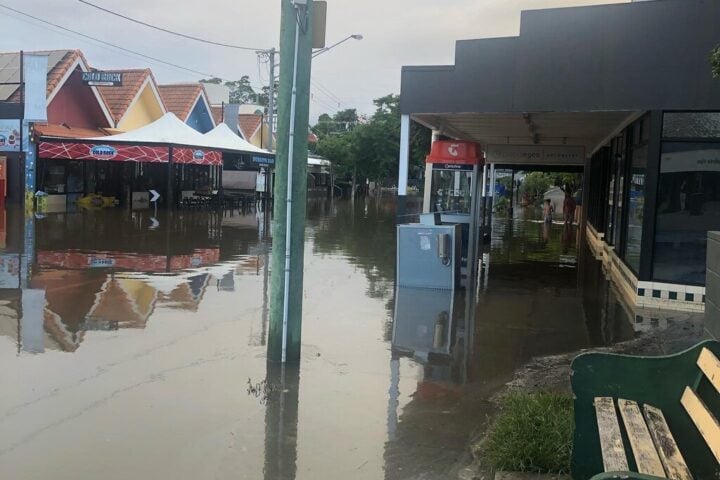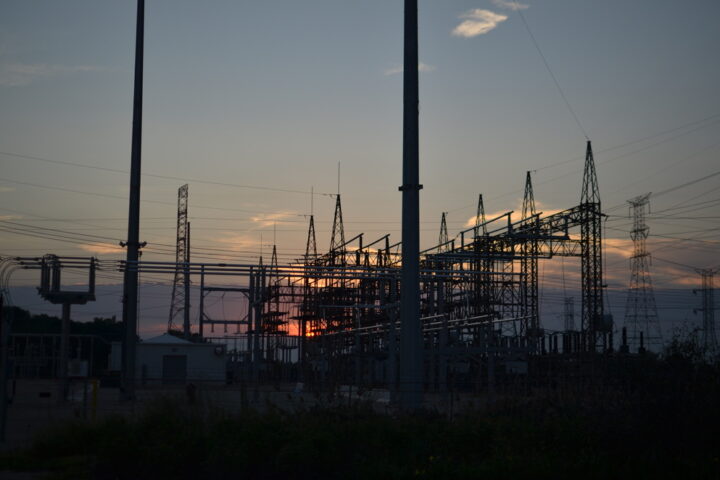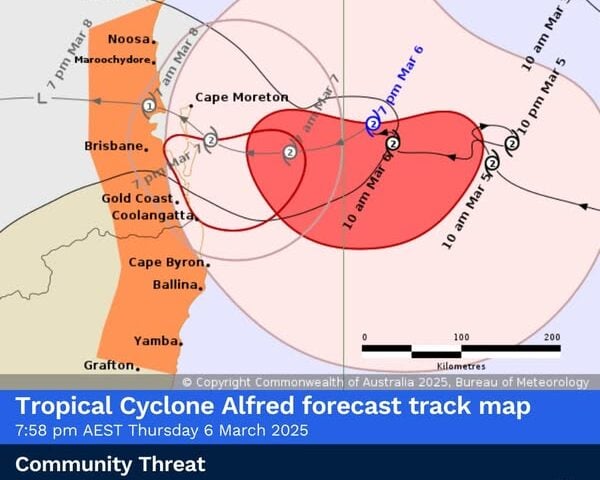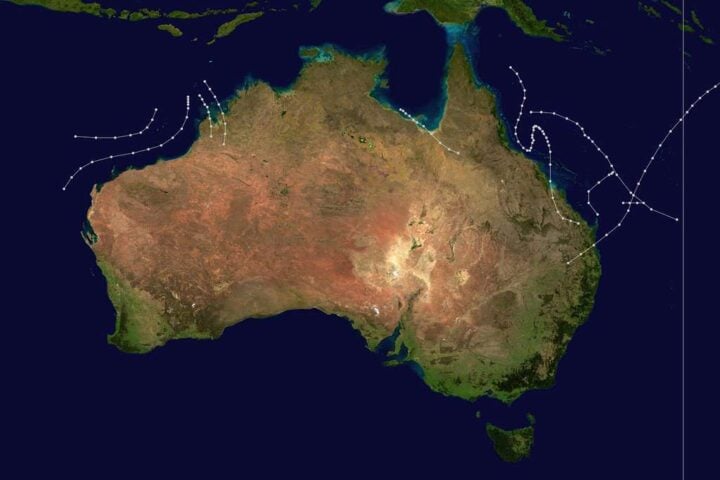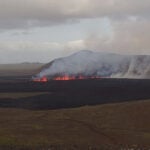The Reykjanes Peninsula in southwestern Iceland experienced its seventh volcanic eruption since December 2023, marking the region’s tenth eruption since 2021. The latest eruption began at 11:14 p.m. on November 20, 2024, with minimal advance warning.
Eruption Details and Impact
A 3-kilometer fissure opened in the earth’s crust, releasing bright orange lava and smoke into the night sky. The Icelandic Meteorological Office reported that seismic activity provided only 45 minutes of warning before the eruption – a stark contrast to previous events where weeks of increased seismic activity preceded eruptions.
“In the big picture, this is a bit smaller than the last eruption and the eruption that occurred in May,” said Magnús Tumi Guðmundsson, a professor of geophysics who conducted aerial surveillance with the Civil Protection agency.
Emergency Response and Public Safety
The town of Grindavík, which has weathered multiple evacuations since December 2023, saw approximately 50 homes evacuated. The iconic Blue Lagoon thermal spa closed its operations and evacuated visitors as a precautionary measure.
Vidir Reynisson, head of Iceland’s Civil Protection and Emergency Management, issued a stern warning: “This is not a tourist attraction and you must watch it from a great distance.”
More Stories
Scientific Analysis and Future Implications
The Icelandic Meteorological Office confirmed that eruption activity peaked by 2 a.m. on November 21. Gas emissions from the eruption are expected to move southward toward the sea, minimizing potential health risks to populated areas.
This geological system, dormant for 800 years until 2021, has shown increasing activity. Scientific experts project that the Reykjanes region may experience volcanic episodes for decades or even centuries to come.
Transportation and Infrastructure Status
Unlike the disruptive 2010 Eyjafjallajökull eruption that halted trans-Atlantic air travel, Keflavik International Airport’s website confirms the facility remains operational. The eruption has not affected flight schedules, though local roads near the eruption site are closed.
Historical Context
Iceland, home to about 400,000 residents, typically experiences one eruption every four to five years. The frequency of eruptions since December 2023 represents an unprecedented increase in volcanic activity for the region.
Local authorities continue monitoring the situation, with particular attention to Grindavík’s infrastructure and potential lava flow directions. As this volcanic system reawakens after centuries of dormancy, Iceland adapts to what may become its new geological normal.
